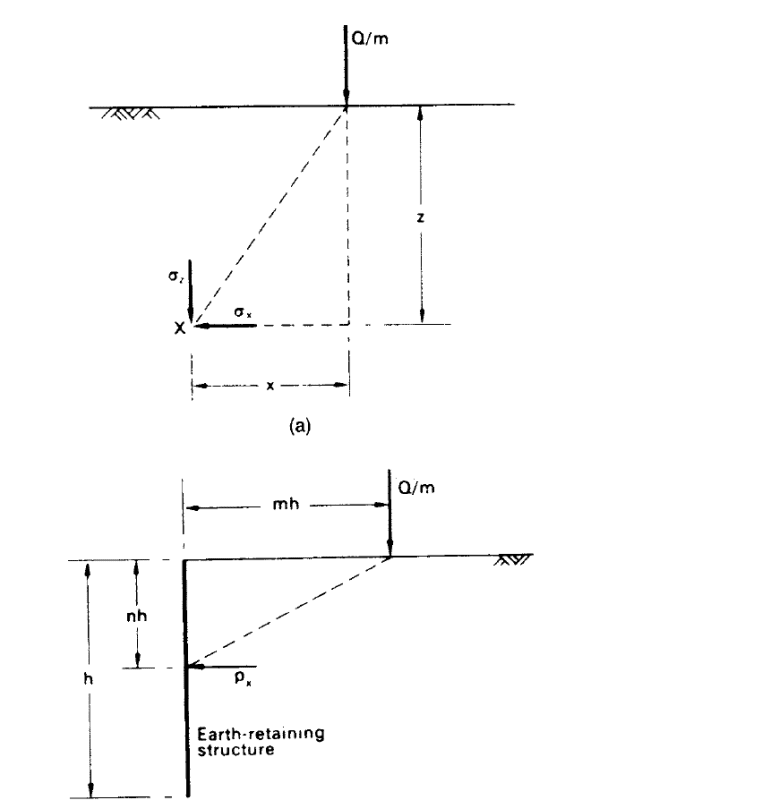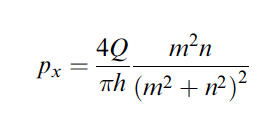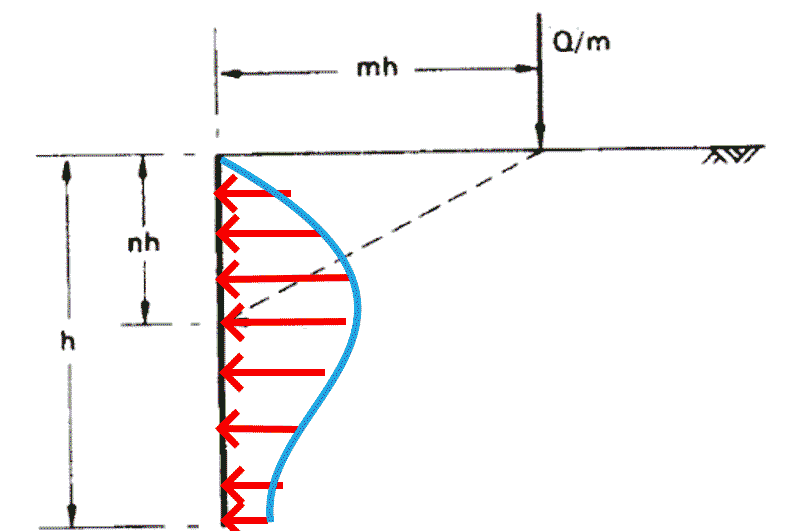Hi all,
I am considering a case whereby I have a 5m vertical retaining wall which supports a cohesionless fill of density 1.9g/cm3.
The top surface of the backfill is horizontal and there are two vertical line loads acting downwards onto the surface. I need to calculate the active thrust which is generated due to the two line loads.
Following the logic in Craigs Soil Mechanics I see that the following is true for a single line load surcharge:

Which gives a lateral pressure of:

And a total thrust of:

If anybody can help I need clarity on the following:
1. What is line of action of the total thrust? I understand it would be the centre of the pressure distribution but analytically how is this calculated?
2. Does the fact that in my application I have two separate line loads change the calculation of total thrust? Do I have two separate thrusts, one for each line load?
3. How does the analysis change if it is assumed there is friction between the soil and the vertical wall?
Thanks!!
I am considering a case whereby I have a 5m vertical retaining wall which supports a cohesionless fill of density 1.9g/cm3.
The top surface of the backfill is horizontal and there are two vertical line loads acting downwards onto the surface. I need to calculate the active thrust which is generated due to the two line loads.
Following the logic in Craigs Soil Mechanics I see that the following is true for a single line load surcharge:

Which gives a lateral pressure of:

And a total thrust of:

If anybody can help I need clarity on the following:
1. What is line of action of the total thrust? I understand it would be the centre of the pressure distribution but analytically how is this calculated?
2. Does the fact that in my application I have two separate line loads change the calculation of total thrust? Do I have two separate thrusts, one for each line load?
3. How does the analysis change if it is assumed there is friction between the soil and the vertical wall?
Thanks!!


![[idea] [idea] [idea]](/data/assets/smilies/idea.gif)